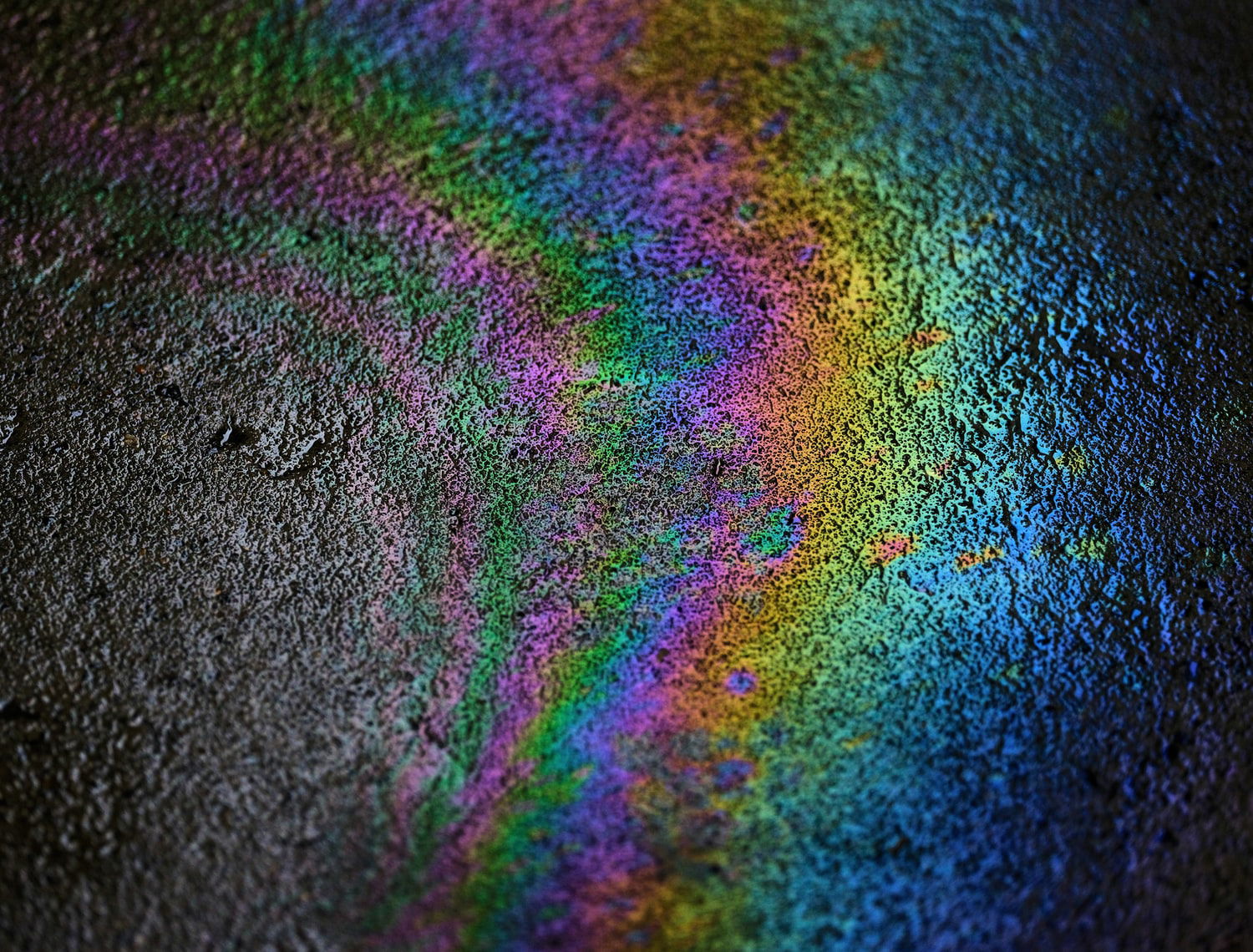Rainbow on the Asphalt

The storm had taken a sharp turn inland at the last minute, smothering the sun behind dark, intrusive clouds. Trees jerked this way and that, dancing like a tortured puppet as their leaves were ripped away from their limbs. Any second, the next wave of rain could crash down and dunk everyone in a frigid shower. Under these dreadful conditions, traffic was a nightmare. No one dared pick up too much speed. Red lights lingered for too long, leaving everyone staring at each other through busy wipers, trying to deduce whose turn it was to slowly crawl into the oncoming droplets.
Then, outside the passenger window, Sarah saw a 1970s Volvo drive away from a rainbow on the muddy asphalt. Unlike its beautiful cousins who arch over the world as the golden ball peeps out from behind dark clouds, this rainbow infected nearby puddles with its obnoxious mark. It bent and contorted this way and that as it raced to engulf as much ground as possible until finally dispersing under the wheels of an Audi. The rainbow scattered across the pavement in a spray of ugly stains, each too small to grow anymore but still large enough to stare up, spiting the rest of the world. Somewhere down the road, that same Audi’s leaky radiator built its own inverted rainbow while waiting for the lights to turn green.
Everyone stared at all the splotches with disdain only to create their own whenever they chose to drive a hunky gas-powered vehicle, often without realizing that the dripping gasoline will eventually run off, seep into sewage, and make its way into the ocean, poisoning countless animals along the way. Fortunately for the citizens in this modern city, specially-bred prairie grasses line the perimeters of the roads. Like the sunflowers near Chernobyl, these plants absorb contaminants in the environment in a process called phytoremediation. Standard prairie grass specializes in petroleum waste but different weeds and bean plants had proved even more efficient, offering their services as a green and cost-effective way to clean the soil. Having plants process such toxins not only draws them out of the ground but also helps the plants themselves grow.
Intentionally mutating these grasses into more resistant uptakers of petroleum hydrocarbons may further improve these processes. As technology continues to improve, there is great hope for pairing DNA engineering and phytoremediation for this very purpose. While, admittedly, this is not the best solution nor is a fail-safe one, it buys us time. Joint efforts between companies, the government, and everyday activists have resulted in greater funding to find sustainable alternatives. Phytoremediation is only one example of this attempt to slow the devastation that is global warming. With hope and cooperation, one day the inverted colors on the pavement may revert back into true rainbows reigning over the skies.